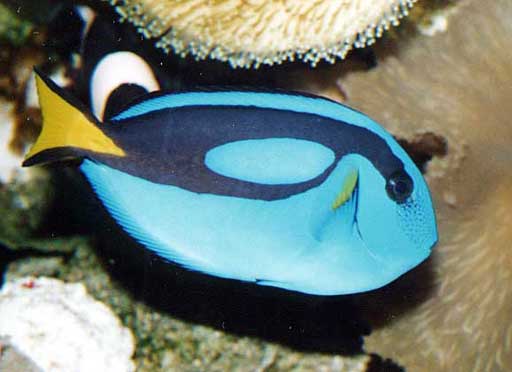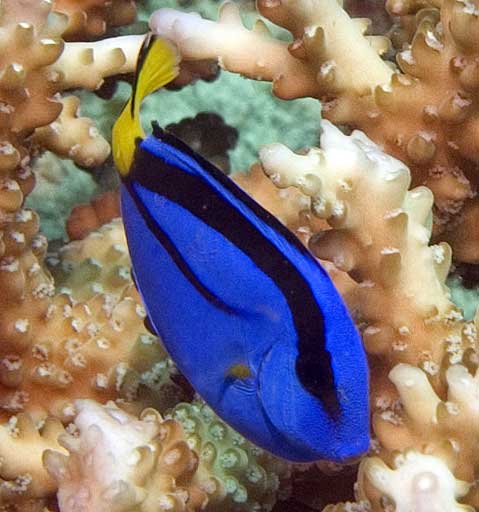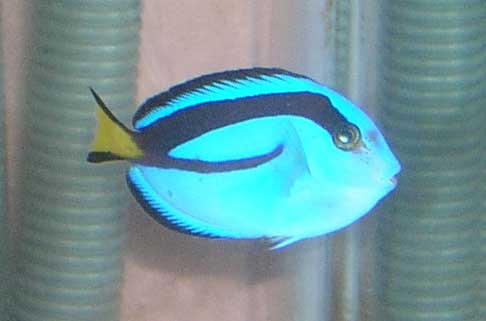
![]() FINS
Home
FINS
Home
![]() FAQs
FAQs
![]() Index of Species
Index of Species
![]() Articles
Articles
![]() Directories
Directories
![]() Glossary
Glossary
![]() Software
Software
![]() DIY Plans
DIY Plans
![]() Gallery
Gallery
![]() Mailing Lists
Mailing Lists
![]() Links
Links
![]() About FINS
About FINS
This index has several hundred pictures, and it's still growing. If you have pictures to contribute which you have taken yourself, I'll happily add them to the database, and give you appropriate credit.
Paracanthurus hepatus
Common name: hippo tang, palette tang
 Photo by Ignatius Tavares |
 In Fiji Photo by Mark Rosenstein / Active Window Productions, Inc. |
 Juvenile Photo by Mark Rosenstein / Active Window Productions |
Juveniles are frail and like all tangs, they are prone to marine Ich throughout their life (the best way to cure ich in a reef tank is to prevent it! Use a quarintine tank). They do well in a reef tank. Keep only one or a school of five or more in your tank. Feed them lettuce if there is not enough algae for grazing. It's recommandable to add Vit C and iodine to prevent lateral line desease.
Unfortunately, the majority of Tangs are prone to marine Ich. In a reef tank it is hard to get rid of this terriblr little parasite. The best way to irradicate Ich from the reef is by using cleaner shrimp. Relatively cheap and effective.
P. hepatus is an excellent choice for fish-only or reef tank because it does not destroy inverts if fed romaine lettuce frequently. Keep the tank brightly illuminated to encourage the growth of microalgae, but don't expect to grow any kind of caulerpa spp. in your reef with P. hepatus. As this is a solitary OR schooling fish, do not expect to keep fewer than five or six in a large tank (an uncrowded 55-gallon tank will allow ample room for an adult fish).
When scared, they wedge themselves sideways under rocks and appear to be dead. They do this at night also. Very decieving and frightening when you first get the fish.